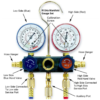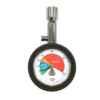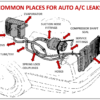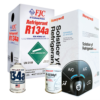Everything You Need to Know About Automotive A/C and Cold Weather

It’s good to know….
- Air conditioning system doesn’t only cool the air, it also conditions it by drying and filtering it.
- Operating your vehicle’s A/C during colder months can prolong the life of your vehicle’s system and, even more importantly, can actually help keep you safer on the road by increasing driver visibility.
- Your vehicle’s A/C is responsible for removing humidity from your vehicle cabin, which is critical to defrosting and defogging your windshield to improve visibility . Having better visibility is especially critical during winter as the days are shorter and darker, oncoming headlights can cause glare on foggy and frosty windshields, and the roads can potentially have more hazards such as snow and ice.
- If your windshield IS fogging up, first remove any frost outside the window. Next, turn off your recirculate button to pull in the colder outside air. Using your defrost vent, turn your car fan on high and turn the temperature down to “cold”. This will direct cool air directly towards your windshield and help the temperature match the outdoor air. The fog is actually caused by these disparate temperatures meeting on the glass.
- Most newer vehicles do run the A/C when defrosters are on. Older cars may need you to manually run the A/C to keep the O-rings and gaskets lubricated and pliable, preventing slow leaks.
- The air conditioning system is one the more expensive components in your vehicle. It is made with parts that are designed to move. The system is full of refrigerant and oils which need to circulate freely to keep the moving parts lubricated. Operating your A/C allows for the oil to circulate through the system and help extend its working life.
- Want to know the quickest way to heat up your car in winter? When you start the car, turn the temperature to cold and turn off the fan. After driving for a bit, switch it to “hot” and turn on the fan. Believe it or not, it will get hotter faster than if you immediately turned it to “hot” with high fan. (This is similar to the way a pot of water with a lid will boil more quickly than one without a lid.)
- If the thought of adding additional cold air to your already freezing cabin is too much for you to bear, you can turn on the A/C and heater at the same time. This will allow the system to move and run, lubricating the system while drying out the air. This will help keep you comfortable by blowing warm air into your car. This is a great preventative measure to extend the life of your vehicle.
- If you need to charge your automotive A/C (add refrigerant), it should be done when the ambient temperature is above 65° F, to allow the system to build up enough pressure for a gauge reading. Therefore, this is not generally recommended during the frigid days of winter.
LMK 2021





